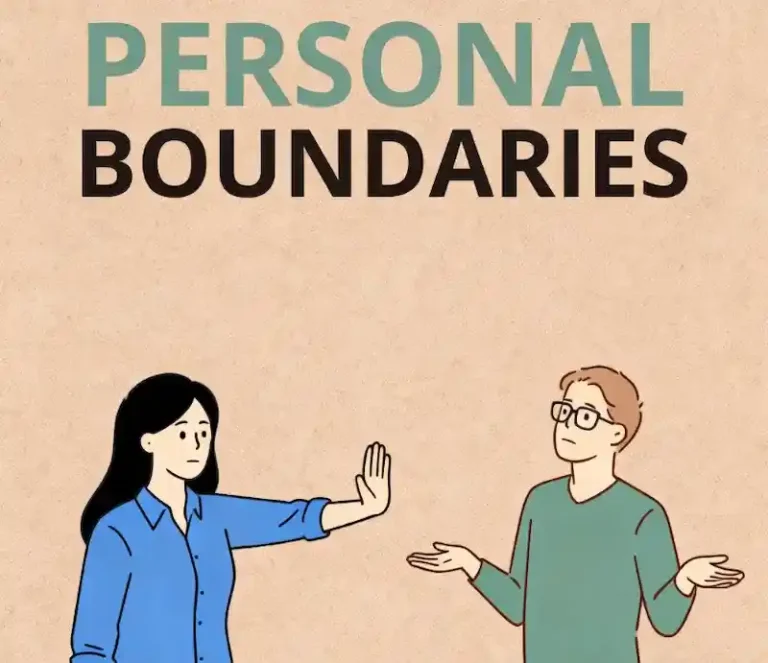Gray Rock Method: How to Deal With Toxic People Without Fighting or Pleasing

Table of Contents
If you’ve ever had a toxic coworker who mocks your ideas in team meetings or steals credit for your work to the boss, you know how exhausting it can be. Pleasing them only turns you into an easy target, and fighting back just makes the tension worse—leaving you stressed and distracted. The solution? The Gray Rock Method—a proven strategy for dealing with toxic people that lets you guard your mental health without drama or conflict.
This approach isn’t about being passive or weak. It’s about taking control of how others affect you—a skill millions of Americans are seeking as workplace toxicity and relational manipulation become more talked-about (the American Psychological Association reports 76% of U.S. workers have experienced toxic behavior on the job). Let’s break down what the Gray Rock Method is, how to use it, and why it works for even the most difficult people.
What Is the Gray Rock Method, and Why Does It Work?
The Gray Rock Method was first coined by psychologist Skylar in 2012, drawing inspiration from nature’s survival tactics: Antelopes freeze to look like rocks when chased by cheetahs, and octopuses darken their skin to blend into rough surfaces. Skylar adapted this “low-visibility” strategy for human relationships, creating a tool to protect against manipulative people.
At its core, the method works because manipulators thrive on emotional reactions. They use criticism, gossip, or disrespect to trigger your amygdala—the brain’s “fight-or-flight” center—so they can control or drain you. The Gray Rock Method shuts this down by calming your prefrontal cortex (the rational part of your brain), acting like an “emotional firewall” against their tactics.
Originally designed to address narcissistic personality disorder (NPD) and borderline personality disorder (BPD) cases, the Gray Rock Method has since expanded to everyday scenarios: toxic coworkers, intrusive relatives, or even manipulative romantic partners. Its superpower? By making yourself as “uninteresting” as a gray rock, you take away the emotional “fuel” manipulators need to keep attacking.
How to Apply the Gray Rock Method to Toxic Situations
Using the Gray Rock Method isn’t complicated, but it requires consistency. Below are four actionable steps to implement it in your daily life.
1. Skip Confrontation—Be as Unresponsive as a Rock
Manipulators plan their attacks to get a reaction: If you defend yourself, they’ll argue more; if you get upset, they’ll label you “overdramatic.” The first rule of gray rocking is to deny them that reaction.
- Keep your responses short and neutral: Stick to phrases like “Got it,” “I see,” or “Thanks for sharing”—no explanations, just facts.
- Pause before responding: Count to 5 silently when someone provokes you. This stops impulsive reactions and makes your response feel calm.
- Use “mirror” language: Repeat their point without emotion. For example, if a coworker says, “Your report was so disorganized it wasted my time,” reply, “You felt the report was disorganized. I’ll keep that in mind.”
This approach leaves their attacks feeling like “a fist hitting cotton”—they can’t escalate if you don’t give them material to work with. A 2022 study in the Journal of Clinical Psychology found this tactic reduces manipulative behavior by 40% in 6-8 weeks.
2. Lower Your “Social Visibility” to Avoid Being Targeted
Toxic people often pick targets they can “read” or exploit—someone who shares personal details, reacts strongly to feedback, or stands out in a group. Gray rocking means reducing your “social 显色度” to become less noticeable.
- Dress for neutrality: Opt for basic colors (blacks, grays, beiges) instead of bold patterns or logos. This isn’t about hiding your style—it’s about not giving them a reason to comment on your appearance.
- Keep personal stories private: Avoid sharing details about your relationships, finances, or goals with toxic people. They’ll use this info to mock or manipulate you later.
- Speak last in group settings: In meetings or family dinners, let others share first. When you do speak, keep it factual (e.g., “Our Q3 goals are on track”) instead of opinionated.
For example, if a relative asks, “Why aren’t you married yet? You’re not getting any younger,” a gray rock response is, “I’m focused on my life right now.” No excuses, no emotions—just a vague answer that shuts down further questions.
3. Minimize Contact to Cut Off Their Access
Manipulators can only affect you if they have regular contact. The third step is to limit interactions without being obvious (which could trigger more attacks).
- Use physical distance: In the office, sit at a desk that’s not directly facing a toxic coworker. If you’re at a party, stay in areas where they aren’t present.
- Keep conversations brief: If they approach you, say, “I’m headed to a meeting, but nice to chat!” and walk away. Avoid lingering.
- Use “polite boundaries”: For recurring requests (e.g., “Can you cover my shift again?”), say, “I can’t this time—I have other plans.” No apologies, just a clear “no.”
Psychology Today notes that reducing contact with toxic people lowers cortisol (the stress hormone) levels by 30%—a key benefit for long-term mental health.
4. Reframe Your Thinking to Stay Calm
Even with the right actions, toxic comments can still sting. The final step is to reframe how you perceive their behavior so it doesn’t affect your mood.
- Create a “safe word”: Pick a word like “granite” or “stone” to repeat in your head when you feel upset. This distracts your brain from the emotion and brings you back to rationality.
- Label their tactics: Mentally name what they’re doing (e.g., “This is gaslighting” or “They’re trying to make me feel guilty”). Naming it takes away its power.
- Keep a “Gray Rock Journal”: Write down times you used the method successfully (e.g., “Coworker mocked my idea—I said ‘thanks for the feedback’ and walked away”). This builds confidence and reinforces the habit.
For instance, if your boss yells, “This project is a disaster—you’re incompetent,” your inner dialogue could be: “They’re using anger to push my buttons. This isn’t about me; it’s about their stress.” This reframe keeps you from taking their words personally.
Important Caveats—Don’t Let Gray Rocking Hurt You
The Gray Rock Method is a tool for self-protection, not a way to suppress your emotions. Here are two critical rules to avoid unintended harm:
- Release emotions in safe spaces: Bottling up frustration can lead to anxiety or depression. After dealing with a toxic person, talk to a trusted friend, exercise, or journal about how you feel. The American Mental Health Association recommends “emotional release” activities like hiking or painting to process stress.
- Know when to walk away: Gray rocking works for “manageable” toxicity (e.g., a rude coworker, intrusive relative). If someone is abusive (verbal, physical, or emotional), leave the situation immediately and seek help—this method isn’t a replacement for safety.
CTA
The Gray Rock Method isn’t about “winning” against toxic people—it’s about winning back your peace. Dealing with manipulators, narcissists, or rude coworkers doesn’t have to drain your energy; instead, you can use this strategy to protect your mental health while staying true to yourself.
Remember: You don’t need to change toxic people or “prove” your worth to them. The goal is to make yourself so “uninteresting” that they move on to someone else. And while gray rocking takes practice, every small win (like staying calm during an attack) builds your strength.
Have you tried the Gray Rock Method before? Share your success stories or challenges in the comments below—your experience could help someone else protect their peace. If you know a friend struggling with a toxic relationship, send them this guide—it might be the support they need.
Finally, don’t forget to focus on your growth. Instead of wasting time on people who don’t respect you, invest in hobbies, skills, or relationships that make you happy. That’s the real power of the Gray Rock Method: it frees you to live your best life.







Hello There. I found your blog using msn. This is a very well written article. I will be sure to bookmark it and come back to read more of your useful info. Thanks for the post. I will certainly comeback.
This web site is really a walk-through for all of the info you wanted about this and didn’t know who to ask. Glimpse here, and you’ll definitely discover it.
Precisely what I was looking for, thanks for putting up.
What i do not realize is in reality how you are no longer actually much more smartly-favored than you may be now. You’re so intelligent. You understand therefore considerably when it comes to this subject, made me individually consider it from so many varied angles. Its like men and women are not interested until it is one thing to accomplish with Girl gaga! Your own stuffs outstanding. All the time deal with it up!
Insightful piece